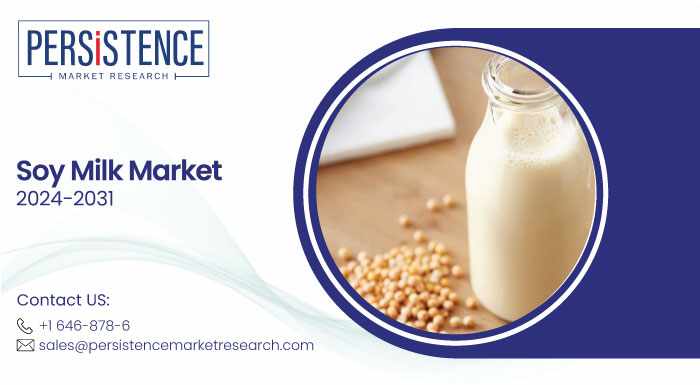
As consumer awareness about nutrition and wellness rises, demand for nutrient-rich horticultural ingredients has surged. Known for their dense nutritional profiles, these ingredients—ranging from leafy greens and fruits to seeds and herbs—are gaining popularity for their natural health benefits. With a focus on clean-label, minimally processed foods, health-conscious consumers are now more inclined toward products containing these natural, nutrient-packed ingredients.
Read More: https://www.persistencemarketresearch.com/market-research/horticultural-ingredients-market.asp
Why Health-Conscious Consumers Favor Nutrient-Rich Horticultural Ingredients
High Nutritional Value and Functional Benefits
Horticultural ingredients, like berries, leafy greens, and superfood seeds, are celebrated for their vitamins, antioxidants, and minerals, which support immunity, energy, and overall health. With an emphasis on consuming foods that promote wellness, consumers are increasingly looking to these natural sources of nutrients. Ingredients such as chia seeds, kale, and blueberries, for example, have become staples in health-focused diets for their roles in reducing inflammation, improving heart health, and enhancing cognitive function.
Growing Preference for Plant-Based, Clean-Label Foods
The clean-label movement has led consumers to seek foods free from artificial additives, preservatives, and allergens. Nutrient-rich horticultural ingredients are highly valued in this context because they offer purity and transparency in product formulations. Clean-label options, such as products containing only whole or minimally processed plant ingredients, appeal strongly to consumers who want to understand every component of what they consume.
The Shift Towards Preventative Health
With rising healthcare costs and an increased focus on lifestyle-based preventive health, more consumers are choosing nutrient-dense foods to proactively manage their wellness. Ingredients like garlic, turmeric, and green tea, known for their medicinal and therapeutic properties, are popular choices in preventative health. These ingredients are used in supplements, teas, and fortified foods that appeal to consumers who want to support their well-being naturally.
Trending Nutrient-Rich Ingredients in Horticulture
Superfood Seeds (Chia, Flax, and Hemp)
Known for their omega-3 fatty acids, fiber, and protein content, superfood seeds are commonly found in energy bars, smoothies, and breakfast foods. Their versatility makes them a favored choice for both consumers and food manufacturers looking to add nutrient density without compromising taste.
Leafy Greens (Kale, Spinach, and Microgreens)
Leafy greens are loaded with vitamins A, C, K, and essential minerals such as iron and calcium. They are becoming popular as powder supplements, juice ingredients, and in prepared salads and ready-to-eat meals, providing an easy way to integrate nutrients into daily diets.
Berries (Blueberries, Goji Berries, and Acai)
Packed with antioxidants, berries are known for their benefits to heart health, skin, and immunity. These fruits are used in everything from smoothies and snacks to skincare products, catering to the dual demand for beauty and health benefits.
Adaptogenic Ingredients (Ashwagandha, Turmeric, and Maca)
With the wellness trend embracing stress reduction and mental clarity, adaptogenic ingredients are becoming popular in supplements, teas, and functional beverages. These botanicals support stress resilience and balance, aligning well with consumers’ wellness goals.
Regional Market Dynamics: Growth Hotspots for Nutrient-Rich Ingredients
North America
The North American market has been quick to embrace nutrient-dense horticultural ingredients, driven by a strong health and wellness culture. Consumers in this region actively seek out superfoods, fortified snacks, and natural supplements. As such, local farmers and suppliers are capitalizing on this demand by focusing on innovative superfoods and locally-sourced ingredients.
Europe
Europe’s market is seeing a similar shift, particularly with the popularity of organic and functional foods. European consumers prefer plant-based foods that align with both their dietary and environmental concerns, driving demand for nutrient-rich, eco-friendly ingredients like oats, berries, and seeds.
Asia-Pacific
The Asia-Pacific region is notable for its cultural affinity for plant-based diets and functional foods, and there is growing demand for nutrient-dense ingredients like mushrooms, herbs, and seeds. Japan and South Korea, for example, have witnessed a sharp increase in nutrient-focused supplements and functional beverages.
Innovations in Nutrient-Dense Ingredient Applications
Fortified Snacks and Beverages
Food manufacturers are increasingly incorporating nutrient-dense horticultural ingredients into snacks, such as bars, chips, and trail mixes, as well as in beverages like smoothies and juices. These products are crafted to provide essential nutrients and cater to the convenience-driven consumer looking for on-the-go health solutions.
Functional Teas and Supplements
Teas and powdered supplements enriched with botanical extracts, antioxidants, and vitamins are popular among health-conscious consumers. Ingredients like ginger, ginseng, and ashwagandha are formulated to support immune health, digestion, and relaxation, creating demand in the wellness industry.
Plant-Based Meat and Dairy Alternatives
Nutrient-rich ingredients are also making their way into plant-based alternatives, where manufacturers are using ingredients such as pea protein, almond, and coconut to enhance the nutritional profile of dairy and meat substitutes. The high protein and fiber content in these ingredients are appealing to consumers who seek meat and dairy substitutes without compromising on nutritional value.
Future Prospects and Challenges for Nutrient-Rich Horticultural Ingredients
Opportunities for Growth
The expansion of nutrient-rich horticultural ingredients is expected to continue as more people adopt plant-based diets and prioritize nutritional density. Innovative food technology, such as fermentation and cellular agriculture, may further enhance the nutrient profiles of these ingredients, creating new possibilities for health-focused food products.
Addressing Supply Chain Constraints
Ensuring a stable and sustainable supply of popular ingredients like quinoa, chia seeds, and blueberries is essential to meeting consumer demand. Investments in sustainable farming practices and local sourcing can help mitigate supply constraints and provide a steady flow of these ingredients.
Regulatory and Labeling Requirements
As consumers seek transparency in their food choices, clear labeling of nutrient content and health benefits will be crucial. This requires consistent regulatory standards and guidelines, especially in emerging markets where awareness of nutrient-rich products is growing.
Conclusion
With increasing focus on health, wellness, and sustainability, nutrient-rich horticultural ingredients are quickly gaining traction in the global market. Their natural health benefits, coupled with the demand for clean-label products, are transforming consumer diets and driving the horticultural sector’s growth. From superfoods to adaptogens, these ingredients are meeting consumer needs for nutrition and transparency, while also creating new growth opportunities for manufacturers worldwide. As more people embrace nutrient-dense, plant-based diets, the horticultural market is well-positioned to thrive.




















Write a comment ...